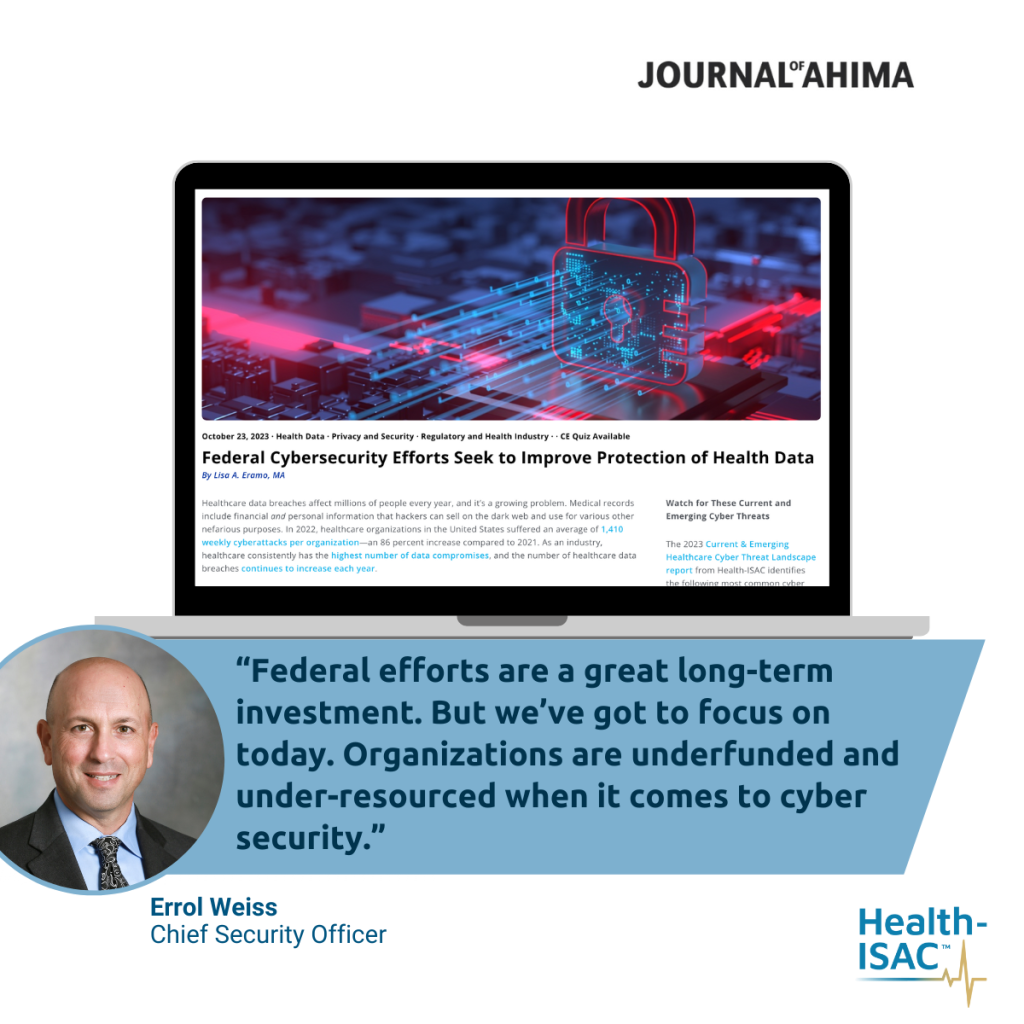Pulled Health-ISAC quotes:
“It’s just not about patient safety. It’s also about public safety and even national security,” says Weiss, who spoke about cyber threats to healthcare organizations at the AHIMA23 Conference on Oct. 9 in Baltimore. His session [was] presented on Oct. 27 during the AHIMA23 Virtual Conference. “When things start to go wrong locally, there could be a domino effect. When a hospital is impacted by ransomware, it defers patients to another hospital. When that second hospital becomes overwhelmed, it defers to a third hospital and so on. The issue starts impacting a larger area.”
Weiss says he hopes innovations that come from the DIGIHEALS project will include self-healing network technology that would detect and fix problems such as an outdated security patch. This technology can help take the burden off existing information technology (IT) staff, particularly in small, rural hospitals that are sometimes most vulnerable to cyberattacks, he says.
“The federal efforts are a great long-term investment. But we’ve got to focus on today,” Weiss says. “Organizations are underfunded and under-resourced when it comes to cyber security. They need more resources. They need more help to protect their networks.”
Read the full article in the Journal of AHIMA here:
https://journal.ahima.org/page/federal-cybersecurity-efforts-seek-to-improve-protection-of-health-data
 Healthcare data breaches affect millions of people every year, and it’s a growing problem. Medical records include financial and personal information that hackers can sell on the dark web and use for various other nefarious purposes. In 2022, healthcare organizations in the United States suffered an average of 1,410 weekly cyberattacks per organization—an 86 percent increase compared to 2021. As an industry, healthcare consistently has the highest number of data compromises, and the number of healthcare data breaches continues to increase each year.
Healthcare data breaches affect millions of people every year, and it’s a growing problem. Medical records include financial and personal information that hackers can sell on the dark web and use for various other nefarious purposes. In 2022, healthcare organizations in the United States suffered an average of 1,410 weekly cyberattacks per organization—an 86 percent increase compared to 2021. As an industry, healthcare consistently has the highest number of data compromises, and the number of healthcare data breaches continues to increase each year.

